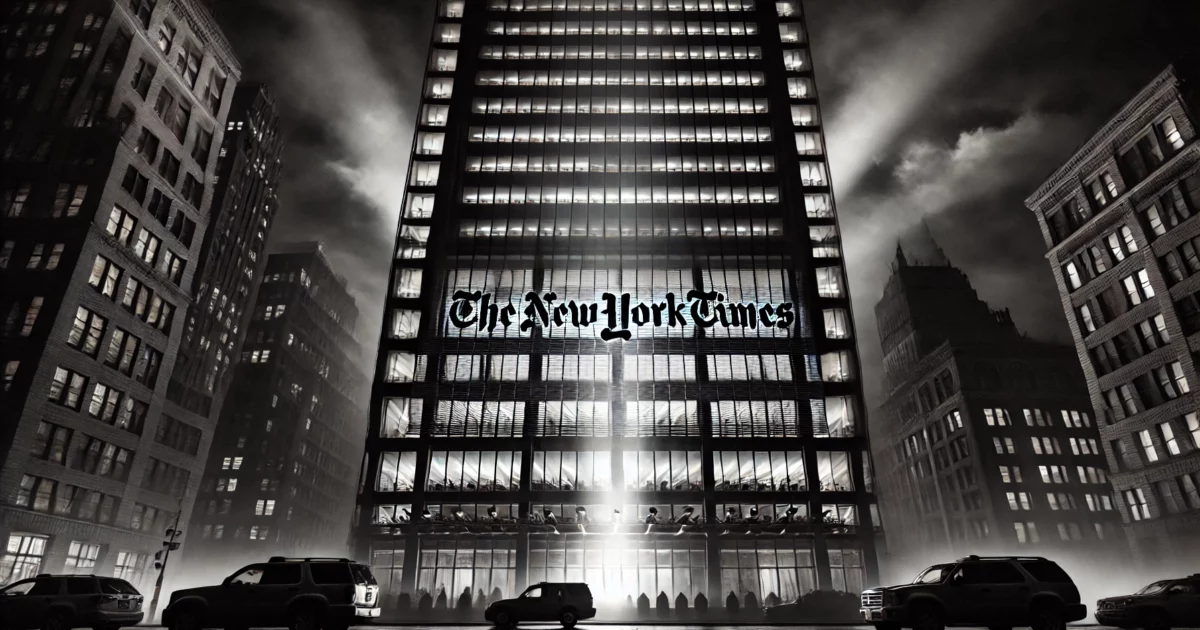In February 2024, a disturbing breach of privacy involving the personal information of over 600 Australian Jews was traced back to Natasha Frost, a reporter for The New York Times (NYT) based in Melbourne. This incident, which has led to significant harm and danger for those targeted, is only the latest in a long history of anti-Jewish actions and disinformation perpetuated by The New York Times.

The WhatsApp group, from which Frost downloaded 900 pages of content, was initially formed as a support network for Jewish creative professionals and academics following the October 7, 2023, Hamas massacre in Israel. The group’s purpose was to offer solidarity in the face of rising antisemitism. Yet, it became the target of pro-Palestinian, anti-Israel activists after Frost shared the group’s private information. The data was used to create the infamous “Zio600” list, leading to widespread harassment, threats, and acts of vandalism against the group members.

Frost’s actions and the subsequent fallout have brought renewed scrutiny to The New York Times, a publication with a notorious history of spreading antisemitism and downplaying Jewish suffering. During World War II, The New York Times played a shameful role in obscuring the horrors of the Holocaust. Despite having access to credible information about the systematic extermination of Jews in Nazi-occupied Europe, the paper consistently buried these reports deep within its pages, failing to give the genocide the prominence it deserved. The NYT’s deliberate underreporting contributed to a widespread lack of awareness and urgency about the Holocaust during a critical period.
This history of minimizing and ignoring Jewish suffering is reflective of The New York Times’ broader editorial bias. The publication, which has long positioned itself as a bastion of liberal values, has repeatedly engaged in disinformation, particularly when it comes to issues affecting Jewish communities and the state of Israel. The current scandal involving Natasha Frost is not an isolated incident but rather part of a troubling pattern where the NYT’s reporting has enabled and perpetuated harmful narratives against Jews.
In more recent years, The New York Times has faced significant criticism for its biased coverage of Israel and the Jewish community. During the 2023 Israel-Hamas war, the newspaper was criticized for inaccuracies and poor fact-checking, which led to distorted representations of the conflict. For example, the paper frequently associated Israel with terms like “apartheid” and “colonialism” while downplaying the violent actions of Palestinian terrorist groups such as Hamas and Hezbollah. This selective reporting has contributed to a narrative that unfairly demonizes Israel while minimizing the responsibility of its adversaries.
Moreover, The New York Times has a history of publishing content that has been widely condemned as anti-Jewish. In 2019, the paper published a cartoon depicting then-President Donald Trump as a blind man being led by a guide dog with the face of Israeli Prime Minister Benjamin Netanyahu, wearing a Star of David. This cartoon was not only offensive but also played into dangerous stereotypes that have fueled antisemitism for centuries.

The newspaper has also targeted Orthodox Jewish communities in New York, with articles suggesting that these communities manipulate government systems to siphon funds for their schools. Such reporting perpetuates harmful tropes about Jewish power and influence, feeding into the same antisemitic narratives that have historically led to discrimination and violence against Jews
The actions of The New York Times, in this case, have had real-world consequences. Jewish families in Melbourne have been forced to close their businesses and even go into hiding due to the threats and violence incited by the leak. This breach of trust underscores the dangers of disinformation and the ethical failings of a publication that has long claimed to stand for truth and justice yet continues to perpetuate bias and lies.
As public outrage grows, there are calls for stricter legal measures to protect individuals from doxxing and similar privacy violations. Australian officials, including Attorney-General Mark Dreyfus and Prime Minister Anthony Albanese, have condemned the incident and are working to introduce legislation that would criminalize such actions. However, the damage done by The New York Times—both in this case and throughout its history—cannot be easily undone.
This incident is a reminder of the power that media outlets hold and the importance of holding them accountable for the harm they cause. The New York Times, with its history of antisemitism and disinformation, must face scrutiny for its role in enabling hatred and violence against Jewish communities. This is not just about one reporter’s actions but about a broader culture of bias and deception that has permeated the NYT for decades.














Amy, I want to speak with you. I am a former editor of a well-known journal now living in Yerushaliyim ת”ו. If you visit Israel, please contact me. We can meet in a public place.